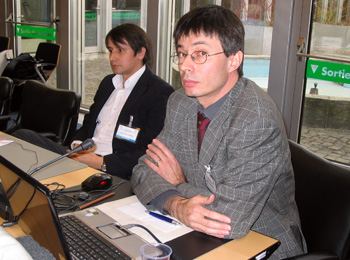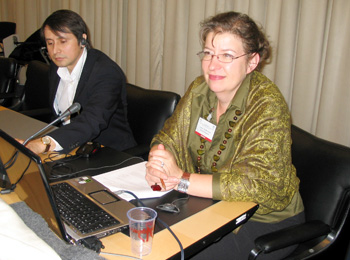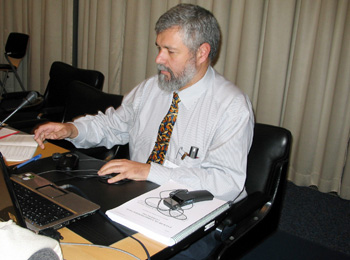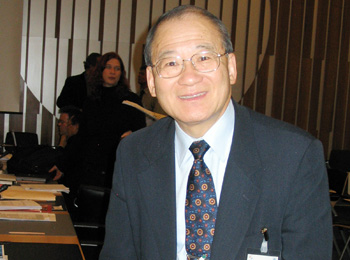 |
|
|
Third meeting of the Persistent Organic Pollutants Review Committee (POPRC-3)
|
|||||
| 19-23 November 2007 | Geneva, Switzerland | |||||
 |
|
November 2007
|
|||||||||||||||||||||||||||||||||||||||||
|
|||||||||||||||||||||||||||||||||||||||||||
 |
|||||||||||||||||||||||||||||||||||||||||||
Monday, 19 Nov - Tuesday, 20 Nov - Wednesday, 21 Nov - Thursday, 22 Nov - Friday, 23 Nov
|
Highlights for Tuesday, The third meeting of the Persistent Organic Pollutants Review Committee (POPRC-3) to the Stockholm Convention on Persistent Organic Pollutants (POPs) convened for its second day on Tuesday 20 November in Geneva, Switzerland to discuss a broad range of issues relating to listing new chemicals under the Convention. Delegates examined the five chemicals that have reached the draft risk management evaluation (RME) phase of review. Robert Chenier (Canada) and Ian Rae (Australia) reported on progress in their contact groups on perfluorooctane sulfonate (PFOS) and pentabromodiphenyl ether (pentaBDE) respectively. Participants discussed the draft RMEs for lindane, chlordecone and hexabromobiphenyl (HBB) and agreed to drafting decisions on the listing of chlordecone and HBB. The POPRC also considered the draft risk profile for commercial octabromodiphenyl ether (c-octaBDE). Participants heard a presentation on the OECD Screening Tool for Overall Persistence and Long-Range Transport Potential. A side-event addressed environmental transport and bioaccumulation models to predict exposure to POPs. POPRC-3 also discussed support for the effective participation of developing country members in the work of the Committee. Masaru Kitano (Japan) presented on the assessment of bioaccumulation when the quantitative criteria listed in the Convention are not met. On Tuesday evening, participants met in three contact groups on: PFOS, lindane, c-octaBDE.
|
|||
Leena Ylä-Mononen, UK, Chair of the Ad Hoc Working Group on hexabromobiphenyl (HBB) noted that, as alternatives are already in use, no significant costs are expected to result from listing HBB, but cautioned additional costs may be related to the identification and disposal of existing products containing HBB.
Martin Scheringer, Swiss Federal Institute of Technology Zurich, presented the OECD Screening Tool for Overall Persistence and Long-Range Transport Potential, a free, harmonized, and simple “consensus” model that estimates the long-range transport potential and the overall persistence of chemicals based on five chemical characteristics, and can be used as hazard screening indicators.
Masaru Kitano, Japan, presented on bioaccumulation and concluded that for chemicals which do not meet the quantitative (i) criterion, careful consideration should be given to: level of BCF; evidence of a long half life; an explanation of why the criterion is not applicable; difference in concentrations between trophic levels; high toxicity/high ecotoxicity; and detections in biota/human body, or exposure in the developmental stage.
José V. Tarazona, Spain, introduced the draft risk profile for c-octaBDE, underscoring the main issues in the draft, including chemical identity, the potential for bioaccumulation, and ecotoxicity.
Monday, 19 Nov - Tuesday, 20 Nov - Wednesday, 21 Nov - Thursday, 22 Nov - Friday, 23 Nov
|
Related Links
|
|||
|
Links to IISD RS coverage
|
|||
|
|
|||
|
|
||
|



